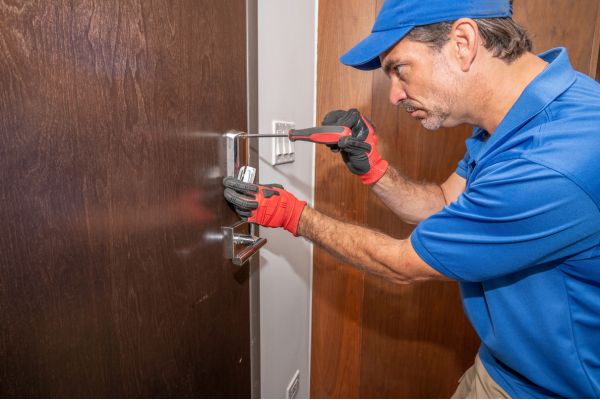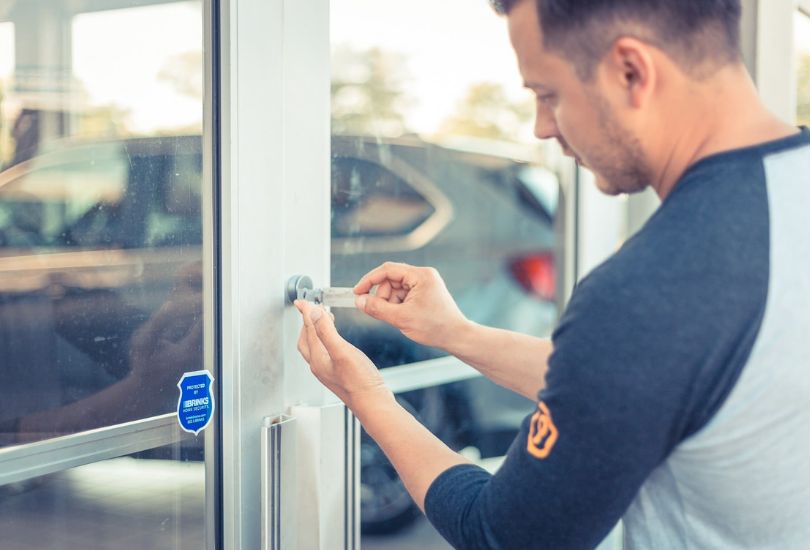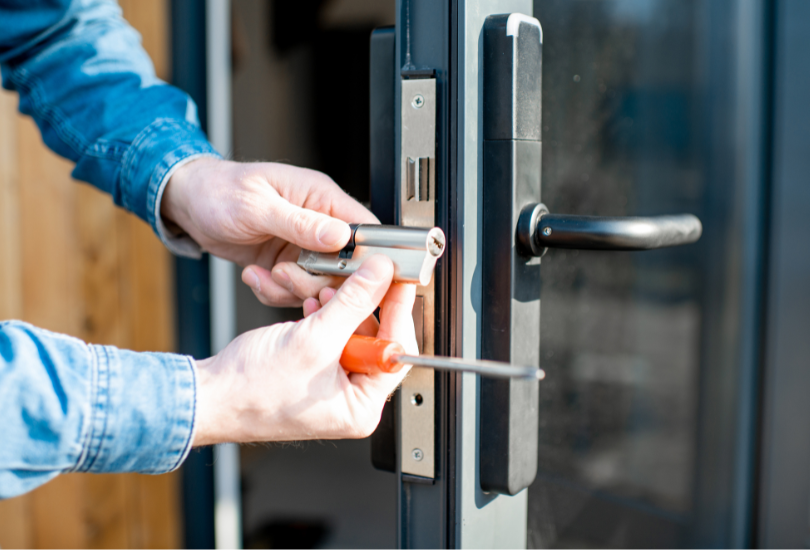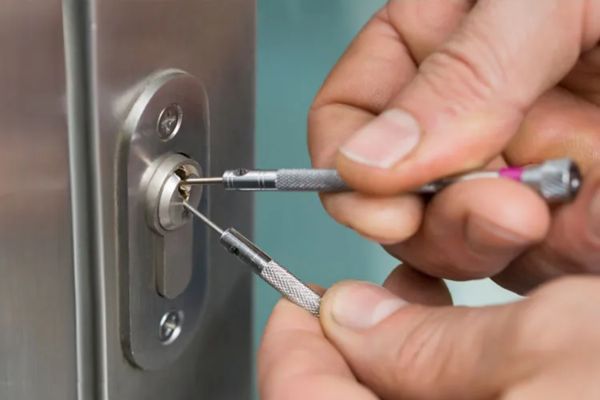Keys play a fundamental role in our daily lives, providing access to our homes, vehicles, and workplaces. Yet, despite their importance, keys are susceptible to wear and tear, accidents, and unexpected mishaps that can leave us locked out or facing potential security risks. In this comprehensive guide, we will delve into the world of broken or damaged keys, exploring the causes, immediate steps to take when a key breaks, key extraction techniques, Key Repair and Replacement options, and the invaluable locksmith solutions available to resolve key-related issues. By understanding how to address these challenges, you can regain access, enhance security, and ensure the reliability of your keys for the long term.
Understanding Key Damage: Causes and Types
Keys, although seemingly simple, can be subjected to various types of damage over time. Understanding the causes and recognizing the types of key damage is crucial in addressing and preventing potential lockouts and security risks. To provide a comprehensive overview, here are some common causes and types of key damage:
1. Wear and Tear:
Cause: Everyday use can lead to gradual wear and tear on key teeth and grooves.
Types: This type of damage often includes rounded edges, worn-down notches, or flattened ridges on the key’s blade.
2. Accidental Breakage:
Cause: Keys can break when excessive force is applied during turning or when they are exposed to physical stress or impact.
Types: Broken keys may have a snapped or cracked blade, rendering them unusable.
3. Corrosion and Rust:
Cause: Exposure to moisture, humidity, or corrosive substances can lead to the development of rust and corrosion on key surfaces.
Types: Corroded keys may have pitted or rough areas that affect their smooth insertion and turning in locks.
4. Bent or Misshapen Keys:
Cause: Keys can become bent or misshapen when they are subjected to lateral pressure, such as when they are accidentally twisted or forced into locks.
Types: Bent keys may exhibit a noticeable curve or kink, making them difficult to use.
5. Key Deformation:
Cause: Keys made from softer materials can become deformed over time due to repetitive use, leading to imprecise fitting in locks.
Types: Deformed keys may have irregular shapes or altered dimensions that hinder their functionality.
6. Key Cutting Errors:
Cause: Mistakes during key cutting or duplication processes can result in keys with inaccurately cut teeth, leading to alignment and turning issues.
Types: Errors may include improperly spaced or misshapen notches on the key.
Understanding the specific type of key damage you are dealing with is essential. This understanding will help determine the most appropriate course of action, whether it involves immediate steps, Key Repair, or Replacement. In the sections that follow, we will explore the steps and solutions available for addressing each type of key damage effectively.
Immediate Steps When a Key Breaks
Discovering a broken key in your lock can be a frustrating and potentially stressful situation. However, taking the right immediate steps can help you address the issue and prevent further complications. Here’s what to do when a key breaks:
Stay Calm:
It’s natural to feel frustrated, but staying calm is essential. Panicking can lead to rushed decisions that may worsen the situation.
Do Not Force:
Avoid the temptation to force the broken key fragment further into the lock or to try turning it with excessive force. This can exacerbate the problem by causing additional damage to the lock.
Assess the Situation:
Examine the broken key and the lock. Determine if there are any visible obstructions or debris that might be hindering the key’s removal. If so, use a pair of tweezers or needle-nose pliers to carefully remove any foreign objects.
Retrieve Key Fragments:
If the key has broken into fragments, attempt to retrieve all pieces. Keeping all parts of the key is crucial for a locksmith to create a replacement.
Contact a Locksmith:
In many cases, it’s best to contact a professional locksmith to handle key extraction and any necessary repairs. This approach is advisable since locksmiths have the expertise, tools, and experience to safely remove broken keys without causing damage to the lock. Moreover, they can also assess the lock’s condition and recommend any necessary repairs or replacements.
Avoid DIY Methods:
Avoid using DIY methods found on the internet, such as superglue, as they can make the situation worse. Attempting to extract the key yourself without the proper tools and knowledge may result in further damage.
Prevent Future Breakage:
Once the key is extracted or replaced, consider having a duplicate key made and regularly maintain your keys to prevent future breakage. Proper care, lubrication, and avoiding excessive force when turning keys can help extend their lifespan and minimize the need for Key Repair and Replacement.
Remember that attempting to handle key extraction without the proper tools and expertise can lead to more significant problems. It’s often more cost-effective and safer to enlist the assistance of a qualified locksmith when dealing with broken keys.
Key Extraction Techniques
Key extraction is a delicate process that requires precision and the right tools. While it’s typically best to leave key extraction to professional locksmiths, here are some key extraction techniques that may be used:
1. Needle-Nose Pliers:
- This method is suitable when a portion of the broken key is still visible and accessible.
- Use needle-nose pliers to grasp the visible part of the key and gently pull it out of the lock.
- Ensure that you apply even and gentle pressure to avoid further damage.
2. Tweezers or Hemostats:
- Tweezers or hemostats are useful for extracting smaller key fragments or when the broken key is close to the lock’s surface.
- Insert the tweezers or hemostats into the keyway and carefully grasp the key fragment.
- Slowly and steadily pull the fragment out of the lock.
3. Key Extractors:
- Key extractors are specialized tools designed for removing broken keys from locks.
- Insert the key extractor into the keyway alongside the broken key fragment.
- Rotate the key extractor to engage with the key’s teeth, and then gently pull the key fragment out.
4. Jigsaw Blade or Hacksaw Blade:
- In some cases, a thin jigsaw blade or hacksaw blade can be used to create a groove in the broken key.
- Insert the blade into the keyway alongside the key fragment and carefully cut a groove.
- Once the groove is deep enough, use the blade to grip and extract the key fragment.
5. Super Glue Method (Caution Required):
- This method should be used as a last resort, as it can be risky and may cause damage.
- Apply a small amount of super glue to the end of a thin, rigid object like a toothpick or paperclip.
- Carefully insert the glued end into the lock and touch it to the broken key fragment.
- Wait for the glue to dry and then gently pull the key fragment out.
When trying to remove a key on your own, you should be very careful, especially if you don’t have locksmith experience. DIY efforts can sometimes cause more harm to the lock or keyway, which can complicate the situation. If you’re unsure or face challenges during the extraction process, it’s a good idea to call a professional locksmith for help and prevent potential Key Repair and Replacement issues.
Repairing and Refurbishing Damaged Keys
Keys that have suffered from wear and tear or minor damage may be candidates for repair and refurbishment. Here’s how you can address such issues:
Cleaning:
Start by cleaning the key thoroughly using a soft cloth and a mild cleaning solution. This can help remove dirt, debris, and any surface corrosion.
Polishing:
If the key shows signs of surface wear, consider using a fine abrasive material, like a metal polish or a jeweler’s cloth, to gently polish the key’s teeth and ridges.
Filing:
In cases where the key has minor nicks or rough spots, you can use a small file to smooth out these imperfections. However, it’s important to be cautious not to file too much, as this can alter the key’s shape.
Lubrication:
Apply a dry graphite or silicone-based lubricant to the key. This makes sure the key goes into the lock smoothly.
Key Cutting:
In some instances, a worn key may benefit from re-cutting. A locksmith can use the existing key as a template to create a new key with precisely cut teeth.
Replacing Keys: When Repair Isn’t an Option
Unfortunately, there are situations when key repair may not be feasible or safe. In these cases, replacing the key is the most sensible solution:
Extensive Damage:
Keys that are severely bent, cracked, or missing significant portions cannot be reliably repaired and should be replaced.
Security Concerns:
If a key sustains damage that compromises its security (e.g., a broken transponder chip in a car key), it is best to replace it to maintain the intended security features.
Old or Worn Keys:
Over time, keys naturally wear down, and their teeth may become too shallow or rounded to engage with the lock properly. In such cases, a new key is necessary.
Locksmith Solutions for Broken or Damaged Keys
When key repair isn’t possible or advisable, professional locksmiths offer several solutions:
Key Duplication:
A locksmith can create a duplicate key from the original, ensuring it matches the lock’s specifications.
Rekeying:
If you’ve lost your key or want to enhance security, a locksmith can rekey the lock, rendering the old key useless and providing you with a new one.
Key Replacement:
For specialized keys (e.g., car keys with transponder chips), a locksmith can replace the entire key, including any electronic components.
Master Key Systems:
Locksmiths can design master key systems that allow multiple locks to be operated by a single key or a set of keys.
Professional locksmiths have the expertise and tools to assess the condition of your key and provide the most appropriate solution, whether it’s Key Repair or Replacement. Consequently, they ensure that your lock and key systems remain secure and functional.
Conclusion:
Keys are essential for our daily routines, allowing us to enter our homes, drive our cars, and access our workplaces. When keys get damaged or break, it can cause inconveniences, lockouts, and even security issues. In this guide, we’ve looked at what can cause key damage, the different types of damage, what to do right away when a key breaks, how to remove a broken key, and Key Repair and Replacement options for repairing or getting a new key.
Understanding the nature of key damage and knowing how to respond can save you time, money, and stress. While you can manage minor key problems through cleaning, polishing, or filing, it’s crucial to know when key repair is no longer feasible. In these cases, professional locksmiths offer expert solutions, including key duplication, rekeying, and key replacement. These options, as a result, ensure the ongoing security and functionality of your locks.
“Keep in mind that trying to fix or remove a key yourself can make things worse, causing more damage. For the best results and peace of mind, it’s a good idea to call a skilled locksmith when you have problems with broken or damaged keys. They have the knowledge and the right tools to solve key issues efficiently and effectively. Consequently, this ensures you regain access and protect your property.”











